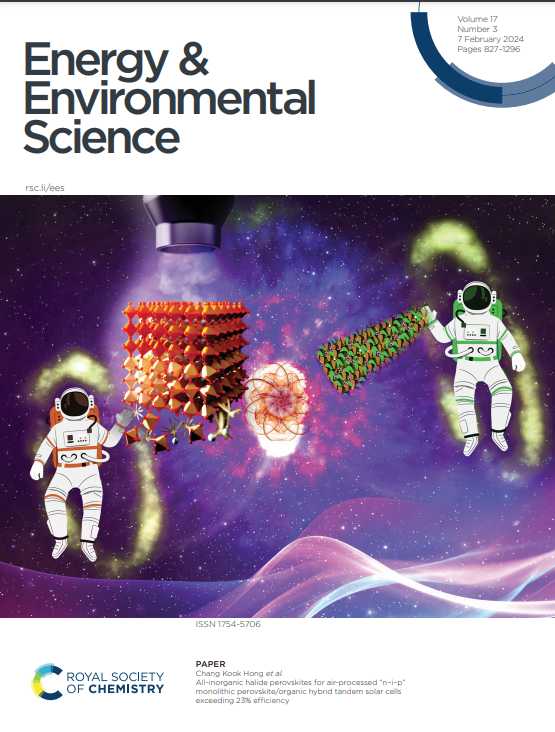Strategies to Improve the Photovoltaic Performance of M-Series Acceptor-Based Polymer Solar Cells: Chemical Hybridization Versus Physical Blending of Acceptors
IF 32.4
1区 材料科学
Q1 CHEMISTRY, MULTIDISCIPLINARY
引用次数: 0
Abstract
A novel asymmetric acceptor, M36-FCl, has been developed by chemically hybridizing two symmetric M-series acceptors: one with fluorinated terminal groups (M36F) and the other with chlorinated terminal groups (M36Cl). This asymmetric acceptor is systematically compared with an alloy-like composite formed by physically blending M36F with M36Cl to elucidate the advantages and limitations of the two strategies (chemical hybridization versus physical blending) in enhancing the photovoltaic performance of polymer solar cells (PSCs). Due to its asymmetric molecular structure, M36-FCl exhibits a large dipole moment and therefore has a higher relative dielectric constant of 4.85 compared to the composite acceptor (3.01). This higher dielectric constant can lower the energy barrier for exciton dissociation into free charges of the resulting devices. More importantly, the PM6:M36-FCl binary blend exhibits a more favorable morphology with improved crystallinity compared with the PM6:M36F:M36Cl ternary blend, resulting in reduced charge recombination and improved charge transport. Consequently, the optimal M36-FCl-based PSC achieves a power conversion efficiency (PCE) of 18.51%, surpassing the performance of the M36F:M36Cl-based counterpart, which has a PCE of 17.57%. The 18.51% PCE is the highest reported value among all ADA-type non-fullerene acceptors (NFAs), highlighting the significant potential of the chemical hybridization strategy for tuning the properties of NFAs to enhance PSC performance.提高基于受体的 M 系列聚合物太阳能电池光伏性能的策略:受体的化学杂化与物理混合
本文章由计算机程序翻译,如有差异,请以英文原文为准。
求助全文
约1分钟内获得全文
求助全文
来源期刊

Energy & Environmental Science
化学-工程:化工
CiteScore
50.50
自引率
2.20%
发文量
349
审稿时长
2.2 months
期刊介绍:
Energy & Environmental Science, a peer-reviewed scientific journal, publishes original research and review articles covering interdisciplinary topics in the (bio)chemical and (bio)physical sciences, as well as chemical engineering disciplines. Published monthly by the Royal Society of Chemistry (RSC), a not-for-profit publisher, Energy & Environmental Science is recognized as a leading journal. It boasts an impressive impact factor of 8.500 as of 2009, ranking 8th among 140 journals in the category "Chemistry, Multidisciplinary," second among 71 journals in "Energy & Fuels," second among 128 journals in "Engineering, Chemical," and first among 181 scientific journals in "Environmental Sciences."
Energy & Environmental Science publishes various types of articles, including Research Papers (original scientific work), Review Articles, Perspectives, and Minireviews (feature review-type articles of broad interest), Communications (original scientific work of an urgent nature), Opinions (personal, often speculative viewpoints or hypotheses on current topics), and Analysis Articles (in-depth examination of energy-related issues).
 求助内容:
求助内容: 应助结果提醒方式:
应助结果提醒方式:


